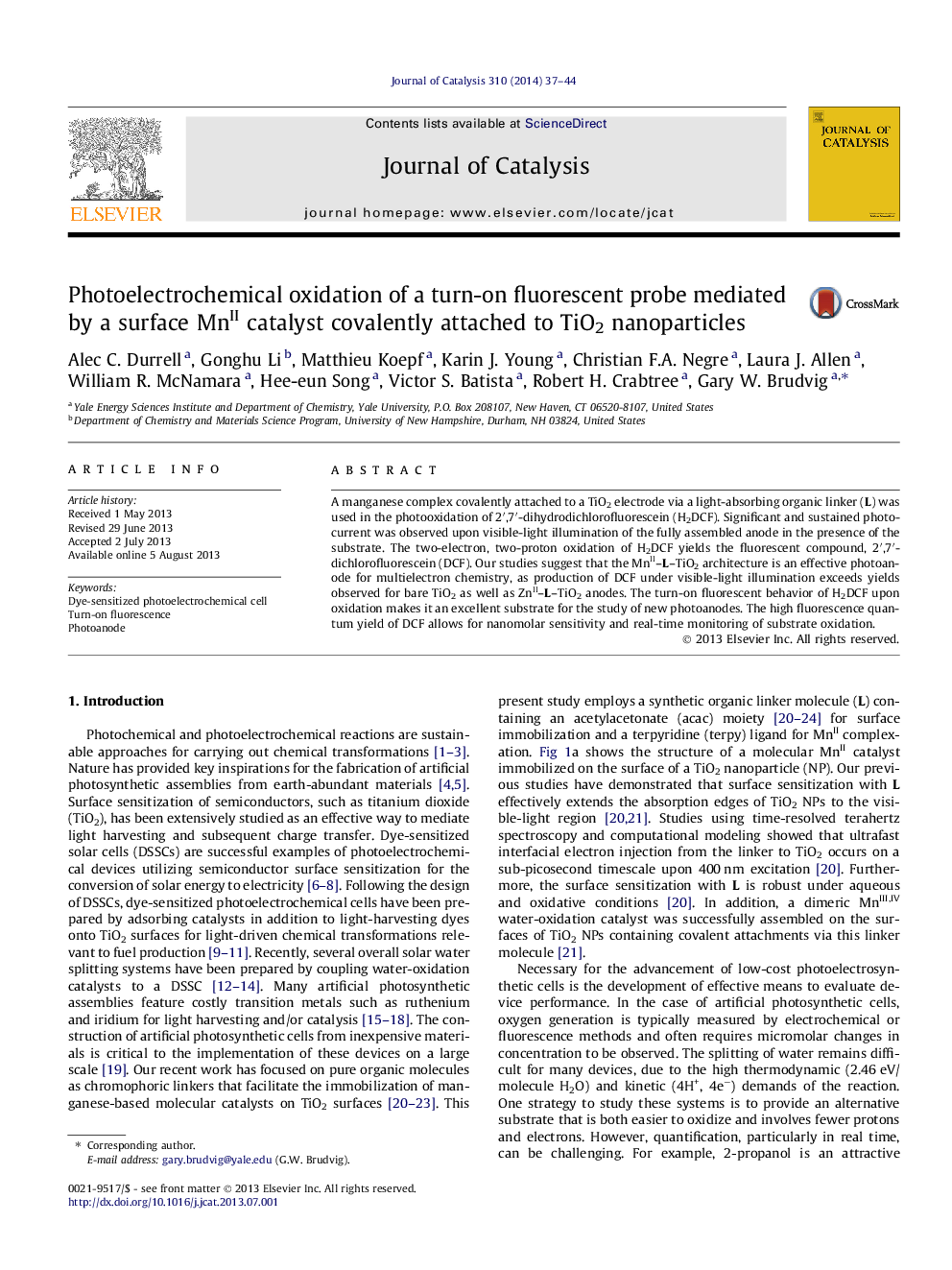| کد مقاله | کد نشریه | سال انتشار | مقاله انگلیسی | نسخه تمام متن |
|---|---|---|---|---|
| 61027 | 47561 | 2014 | 8 صفحه PDF | دانلود رایگان |

• H2DCF is an effective fluorescence sensor to evaluate anode performance in photocatalytic cells.
• We show that increased photocurrent does not necessarily correlate with increased catalysis.
• Redox-active Mn photoanodes outperform redox-inactive Zn anodes.
A manganese complex covalently attached to a TiO2 electrode via a light-absorbing organic linker (L) was used in the photooxidation of 2′,7′-dihydrodichlorofluorescein (H2DCF). Significant and sustained photocurrent was observed upon visible-light illumination of the fully assembled anode in the presence of the substrate. The two-electron, two-proton oxidation of H2DCF yields the fluorescent compound, 2′,7′-dichlorofluorescein (DCF). Our studies suggest that the MnII–L–TiO2 architecture is an effective photoanode for multielectron chemistry, as production of DCF under visible-light illumination exceeds yields observed for bare TiO2 as well as ZnII–L–TiO2 anodes. The turn-on fluorescent behavior of H2DCF upon oxidation makes it an excellent substrate for the study of new photoanodes. The high fluorescence quantum yield of DCF allows for nanomolar sensitivity and real-time monitoring of substrate oxidation.
Figure optionsDownload high-quality image (68 K)Download as PowerPoint slide
Journal: Journal of Catalysis - Volume 310, February 2014, Pages 37–44